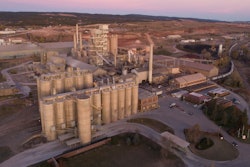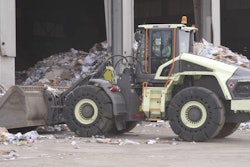
Concrete in the 21st century promises to be a more sustainable material, and given the nine billion metric tons used globally each year, it must be. Portland cement, the binding agent in ordinary concrete, has a very high carbon footprint, resulting in just under one ton of carbon dioxide (CO2) released for every ton of cement produced. With 4.2 billion metric tons of the binder used each year worldwide, cement production is responsible for nearly 8 percent of total global carbon emissions. The high lime content of ordinary portland cement contributes about two-thirds of cement’s CO2 impact through the process of limestone calcination. The other one-third of CO2 released is from combustion of fossil fuels.
Technologies to improve the carbon footprint of concrete are currently in the early stages of development, but some, including carbon sequestration in concrete and substantial reductions of cement using energetically modified cement, are now commercially available. Concrete surface products for paving and walls to scrub air pollution, as well as new self-healing concrete products, are also worth investigating. We have heard about some of these innovations for a decade or more in the research community, but many are finally being brought to market—some more quickly than others. Europe is ahead of the United States in the adoption of these technologies, largely because of more rigorous clean air and carbon reduction initiatives.
New technologies in any field can take a long time to move from the laboratory to the marketplace, but recent sustainable concrete technologies have experienced challenges in scaling up to the global concrete trade, and some companies with promising technologies have gone bankrupt before the market could embrace their products. Although specific products are discussed in this article, it is not an endorsement of these products over others. Few products in these areas are on the market, and the products that are discussed are those that provide the most online information to consumers.


















